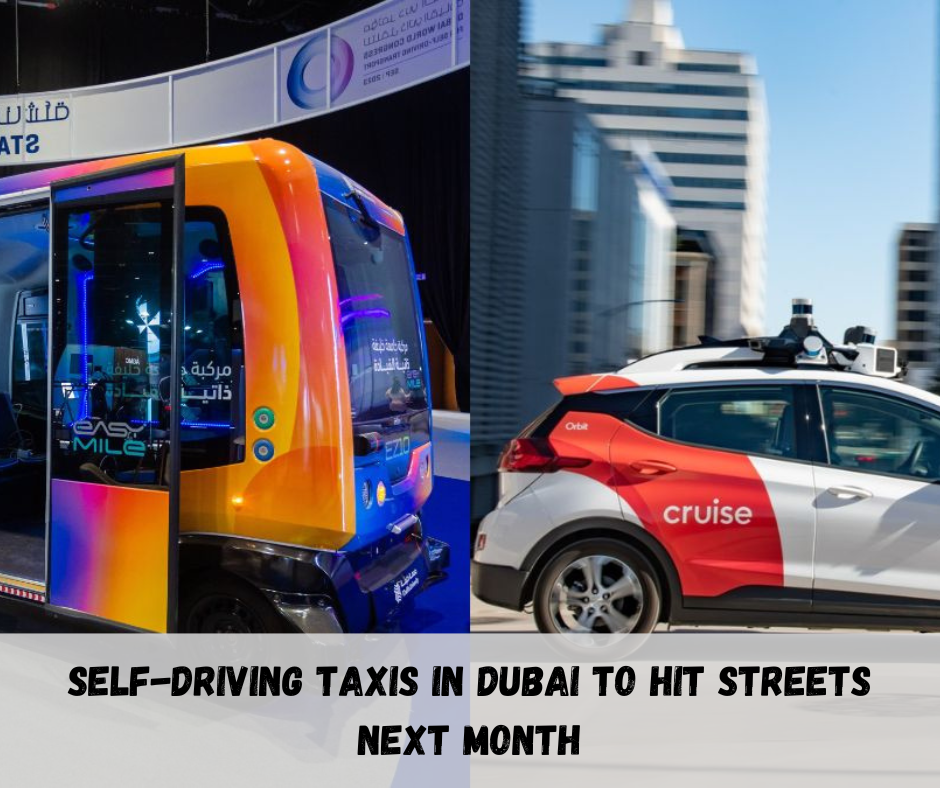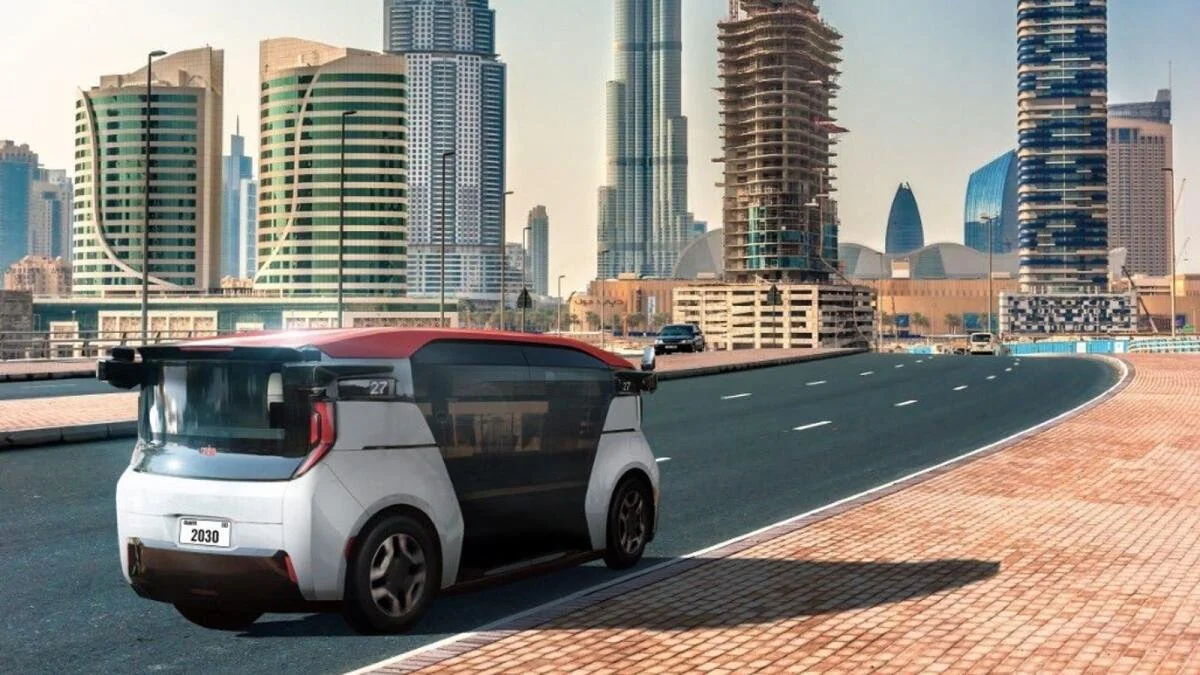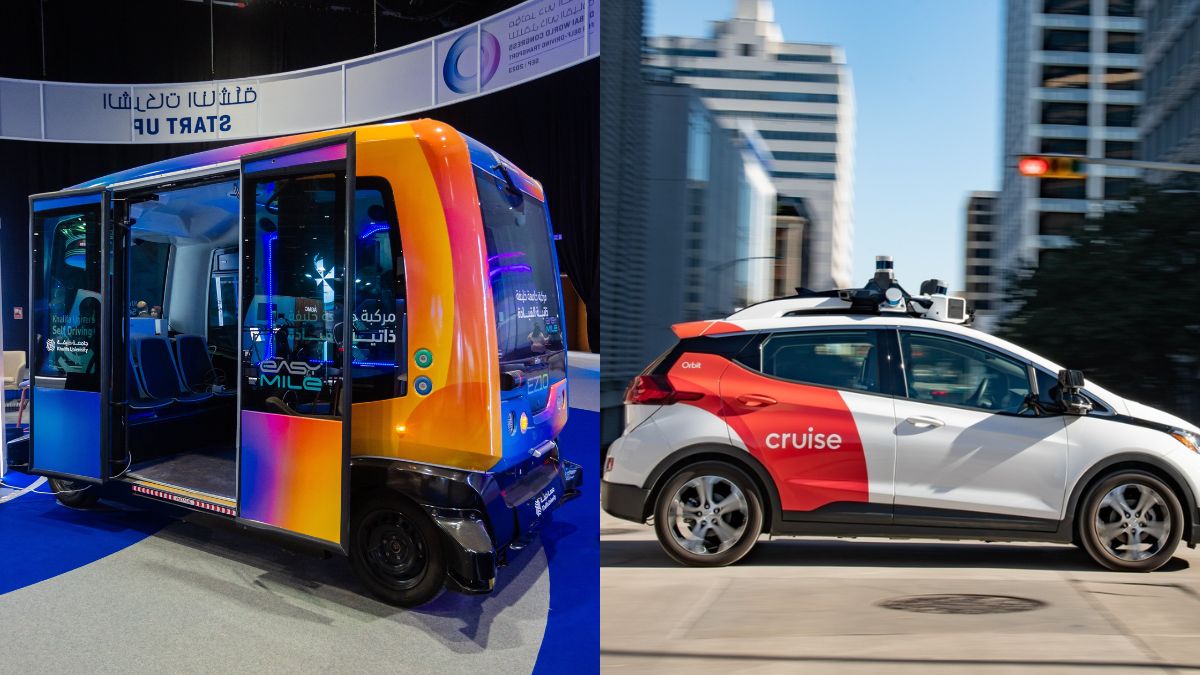
Self-Driving Taxis in Dubai To Hit Streets Next Month

Dubai, known for its innovative and futuristic approach to transportation, is set to break new ground by introducing fully automated self-driving taxis to its streets. The Roads and Transport Authority (RTA) has recently confirmed that these driverless taxis will make their debut in the bustling city next month. This announcement comes on the heels of a successful digital mapping initiative in the Jumeirah 1 area.
Khaled Al Awadhi, the Director of Transportation Systems at the Public Transport Agency of RTA, shared this exciting news during the 3rd Dubai World Congress for Self-Driving Transport. The pilot phase will deploy five autonomous taxis along an 8-kilometer stretch of Jumeirah Road, spanning from the Etihad Museum to the Dubai Water Canal.

The self-driving taxis in question are operated by Cruise, a subsidiary of General Motors (GM) based in the United States. Initially, these vehicles will not carry human passengers during the trial phase. However, select individuals will have the opportunity to experience Cruise’s autonomous taxis by the end of this year, with full commercial operations expected to commence in the second half of 2024.
Dubai’s adoption of fully autonomous vehicles outside the United States marks a significant milestone in the development and deployment of self-driving technology globally. It demonstrates Dubai’s commitment to staying at the forefront of technological innovation in the realm of transportation.
Digital Mapping Milestone
Before the introduction of self-driving taxis, RTA and Cruise successfully completed the digital mapping of the Jumeirah 1 area. To accomplish this task, two Chevrolet Bolt electric vehicles (EVs) were deployed in July, operated by human drivers. These vehicles meticulously recorded streets, pedestrian crossings, signage, and other essential road features. The collected data was used to create a comprehensive and navigable digital map to support the safe operation of autonomous vehicles.
Remarkably, the digital mapping process encountered no significant glitches, even accounting for pedestrians wearing traditional abayas and hijabs. The technology proved its ability to distinguish pedestrians on the streets accurately.
Safety and Regulations
Safety is paramount in the deployment of autonomous vehicles. Al Awadhi emphasized that RTA has worked on corresponding legislation for the operation of autonomous vehicles in Dubai. Collaboration with Dubai Police has been ongoing to formalize a response plan in case any human intervention becomes necessary during the trial phase to handle emergencies effectively.

Capacity and Fare Structure
The Cruise self-driving taxis have a capacity of up to three passengers, offering a unique and convenient mode of transportation for small groups. While the fare structure for these autonomous taxis is yet to be finalized, Al Awadhi hinted that it may be comparable to the rates of limo taxis, which are typically around 30% higher than regular cabs in Dubai.
The vehicles themselves are all-electric Chevrolet Bolts, ensuring emission-free transportation. Equipped with a suite of sensors, including LiDAR, cameras, and radars, these self-driving taxis can accurately detect objects and people on the streets, ensuring safe journeys for passengers.
Future Plans and Expansion
The introduction of self-driving taxis in the Jumeirah area is only the beginning. RTA plans to expand its autonomous taxi fleet in Jumeirah next year. The long-term goal is to gradually deploy 4,000 driverless cabs across Dubai by 2030. This initiative aligns with the Smart Self-Driving Transport Strategy, which aims to transform 25% of mobility journeys in the city into smart and driverless journeys within the next decade.
Jumeirah was chosen as the initial rollout location due to its strategic location and historic tourist attractions. For the time being, the autonomous Cruise taxis will exclusively operate within the confines of the Jumeirah area, with pickup and drop-off limited to the same region. Additionally, these taxis will adhere to the established speed limit of 70 kilometers per hour within the Jumeirah area.
Looking Ahead
As Dubai prepares to introduce autonomous taxis to its streets, it not only solidifies its position as a global leader in smart transportation but also paves the way for a future where self-driving technology becomes an integral part of daily life. With ongoing developments in regulation, safety, and technology, Dubai’s bold step into the world of autonomous transportation sets a remarkable precedent for cities worldwide.
Beyond the self-driving taxis, the presence of Cruise’s shuttle-like vehicle, the Cruise Origin, at the Dubai World Congress for Self-Driving Transport, hints at the potential for future innovations in shared mobility. With no steering wheel or pedals, it is designed for ridesharing, accommodating up to six passengers, and capable of highway-speed travel. With features like personal USB ports and digital displays, it represents the future of comfortable and tech-savvy transportation.
Dubai’s vision of a smarter, safer, and more efficient transportation system through self-driving technology is no longer a distant dream but a reality set to unfold on its streets in just a few short weeks.
FAQs
Here are some frequently asked questions (FAQs) about the self-driving taxis that are set to hit Dubai streets next month:
1. What are self-driving taxis, and when will they be available in Dubai?
Self-driving taxis are autonomous vehicles that can transport passengers without the need for a human driver. They will be available on Dubai streets starting next month.
2. How many self-driving taxis in Dubai will be deployed initially?
During the initial phase, five self-driving taxis will be deployed in Dubai. They will operate along an 8-kilometer stretch of Jumeirah Road.
3. Who is operating these self-driving taxis in Dubai?
The self-driving taxis in Dubai are operated by Cruise, a subsidiary of General Motors (GM) based in the United States.
4. Can passengers ride in these self-driving taxis in Dubaid during the trial phase?
No, during the trial phase, these self-driving taxis will not carry human passengers. However, select individuals will have the opportunity to ride in them by the end of the year.
5. When will self-driving taxis in Dubai be available for commercial use?
The full commercial operation of self-driving taxis in Dubai is expected to begin in the second half of 2024.
6. How was the digital mapping of the Jumeirah 1 area done?
The digital mapping of the Jumeirah 1 area was completed using two Chevrolet Bolt electric vehicles (EVs) driven by human operators. These vehicles recorded streets, pedestrian crossings, signages, and other road features to create a navigable digital map for self-driving vehicles.
7. Are there safety measures in place for these self-driving taxis in Dubai?
Yes, safety is a top priority. Dubai’s Roads and Transport Authority (RTA) has been working on legislation to govern the operation of autonomous vehicles. They are also collaborating with Dubai Police to formalize a response plan in case of emergencies during the trial phase.
8. How many passengers can these self-driving taxis accommodate?
The self-driving taxis in Dubai can accommodate up to three passengers.
9. What will be the fare structure for self-driving taxis in Dubai?
The exact fare structure for self-driving taxis in Dubai has yet to be determined. However, it is hinted that the fares may be comparable to limo taxis, which are typically 30% higher than regular cabs in Dubai.
10. What is the long-term plan for self-driving taxis in Dubai?
Dubai’s long-term plan is to gradually deploy 4,000 self-driving taxis across the city by 2030 as part of its Smart Self-Driving Transport Strategy. This strategy aims to transform 25% of mobility journeys in Dubai into smart and driverless journeys within the next decade.
11. Where will these self-driving taxis in Dubai operate initially?
The first batch of self-driving Cruise taxis in Dubai will operate exclusively within the Jumeirah area. Pick-up and drop-off locations will be limited to this region.
12. Are there any other autonomous vehicles on display in Dubai besides taxis?
Yes, besides the self-driving taxis, the Cruise Origin, a shuttle-like vehicle designed for ridesharing, is also on display. It can accommodate up to six passengers and is designed to travel at highway speeds, featuring amenities like personal USB ports and digital displays.